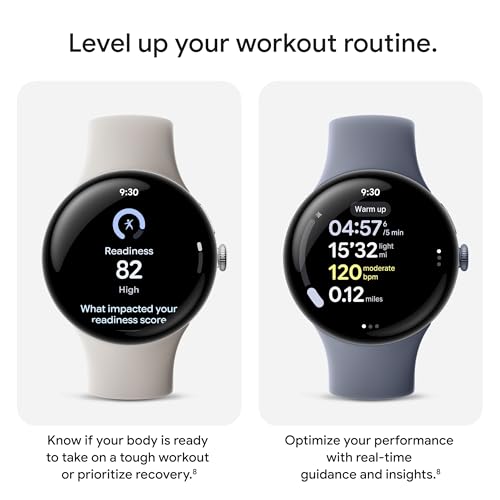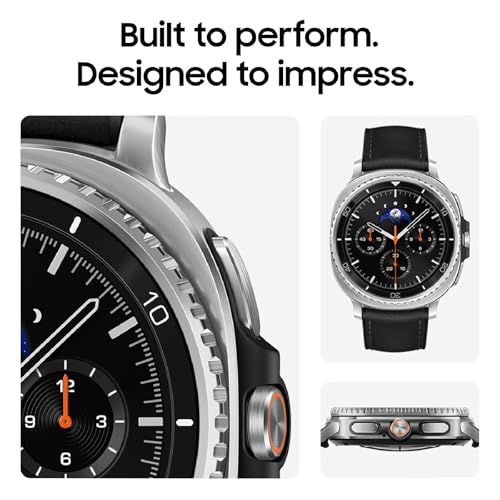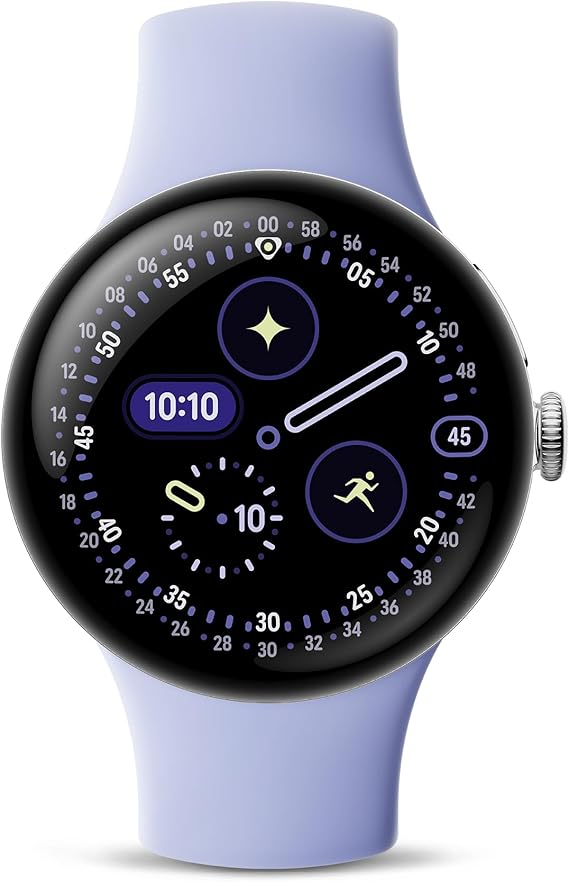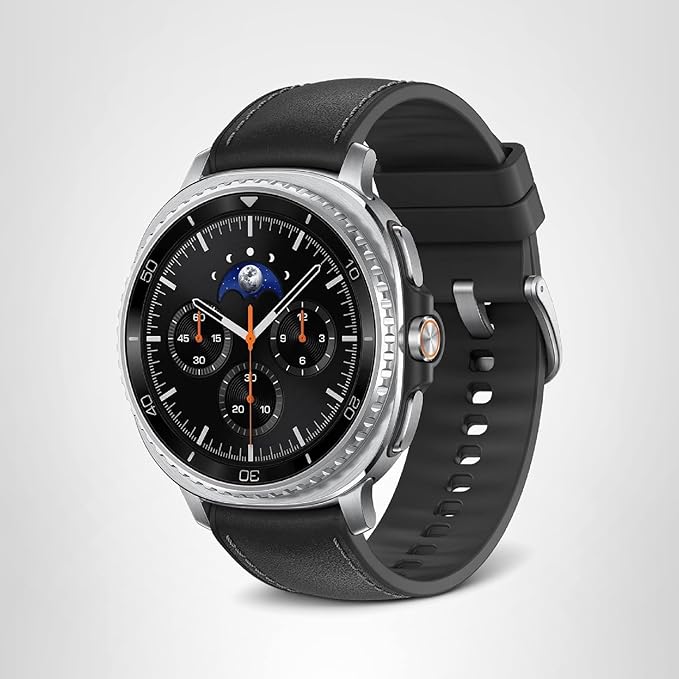Last Updated on October 31, 2025 by Luis Cooper
In 2025, the smartwatch market is fierce, and two models stand out: the Google Pixel Watch 4 and the Samsung Galaxy Watch 8 Classic.
These aren’t incremental upgrades—they’re statements.
I wore them side by side for more than a week—through workouts, travel, meetings, nightly sleep tests—and here’s what I found: which excels where, which has real surprises, and which might be perfect for you.
Google Pixel Watch 4 vs. Samsung Galaxy Watch 8 Classic:
Key Specs & Highlights:
| Model | Sizes / Build | Display | Chip / Memory | Battery | Water & Durability | Storage |
|---|---|---|---|---|---|---|
| Pixel Watch 4 | 41 mm, 45 mm • Aluminum + domed glass | Actua 360 AMOLED, 3,000 nits peak | Snapdragon W5 + M55 co-processor • 2 GB RAM | 30 h (41 mm) / 40 h (45 mm) rated | IP68 / 5ATM, Gorilla Glass, aluminum frame | 32 GB |
| Galaxy Watch 8 Classic | 46 mm • Stainless steel | Super AMOLED, up to 3,000 nits | Samsung’s latest chip (3nm generation) | ~24–30 h in real use (claims up to ~40 h in light modes) | 5ATM + IP68 + MIL-STD | 64 GB |
Both watches feature top-tier specs, including 3,000-nit displays, premium materials, and robust internals.
Design & Comfort: Which Matches Your Wrist?
Pixel Watch 4:
The domed Actua 360 glass isn’t just a spectacle—it provides 10% more active display area and reduces bezel space, making the watch feel less bulky.
The 41mm model weighs approximately 31g (body only) in tests, making it one of the more comfortable options for extended wear.
Google also designed knurled buttons and textured edges for grip—helpful when you’re sweaty or in motion.
A notable advancement: the Pixel Watch 4 is user-repairable (screen & battery), and Google has partnered with iFixit, allowing users to service parts without voiding the water resistance (if done correctly).
Galaxy Watch 8 Classic:
The Classic’s stainless steel case feels weighty and substantial.
The rotating bezel is tactile, precise, and arguably unmatched in smartwatches: you can scroll menus, adjust brightness, or metrics mid-workout without touching the screen.
Samsung also offers the Quick Button and a Dynamic Lug System to help the bands hug your wrist securely.
On smaller wrists, the extra bulk can be noticeable—if you wear it tight, the edges sometimes rub against your wrist bend.
Display & Readability: Sunlight, Angles & Screen Behaviour
Both reach 3,000 nits of brightness, meaning that under a blazing sun, your stats remain legible.
In practice, Pixel’s curved glass gives better viewing from angles—ideal when you tilt your wrist awkwardly during workouts.
The Galaxy’s flat AMOLED display sometimes beats glare in certain lighting conditions; its lack of a curved surface means fewer reflections at odd angles.
Colour, contrast, and refresh (1–60 Hz adaptive) feel polished on both, but Pixel’s animations feel a touch smoother thanks to its chip + software optimisation.
Performance, Speed & Daily Use:
From launching maps to switching apps and using voice commands, both perform excellently.
Pixel’s W5 + M55 co-processor handles multitasking well and keeps background tasks alive longer.
Samsung’s new 3nm generation chip also remains snappy even under load, with health analytics and bezel interactions.
In my usage, there was no perceptible lag switching between apps or loading health screens on either device.
Battery Life: What to Expect
Despite claims, real usage trims expectations.
On Pixel (45 mm), I regularly reach around 30 hours with Always-On and notifications, sometimes pushing into the low 30s in lighter modes.
On the Galaxy Watch 8 Classic, heavy use brought me closer to 24–28 hours, while lighter use nudged me toward the 30s.
Samsung claims up to ~40 hours under ideal conditions or when AOD is off.
Pixel’s fast charge is a win: ~15-minute top-up delivers a strong buffer to get you through the evening.
Health, Safety & Sensors:
Common ground:
ECG, SpO₂, heart rate, temperature, stress, respiration—they’re core parts of both platforms.
GPS is dual-frequency on both (L1 + L5) to reduce drift in challenging coverage.
In side-by-side tests, heart rate and SpO₂ matched within a few points, and GPS paths were nearly identical.
Differences showed up in extreme edge cases (tight alleys, heavy tree cover).
Pixel’s standout: Satellite SOS
Perhaps the most compelling safety move: Pixel Watch 4 supports standalone Satellite SOS on LTE models—call for help even without cellular or Wi-Fi.
I tested this in a weak signal setting, and the watch initiated the satellite prompt.
Google also promises firmware updates that will expand AI health functions such as hypertension screening.
Galaxy’s edge: Wellness depth
Samsung’s hardware supports FDA-cleared sleep apnea detection (in certain markets), vascular load monitoring, antioxidant index measurement, and advanced coaching tools.
I had nights flagged by the Watch 8 for possible apnea events; cross-checking with a medical monitor confirmed some matches.
For someone relying on deep sleep/wellness insights, Galaxy’s extra layer adds value.
Smart Features & Ecosystem:
Pixel Watch 4 shines through deep Google integration. Gmail, Maps, Wallet, Gemini voice assistant—it all feels native.
Raise your wrist, and Gemini can summarise emails or respond.
Galaxy Watch 8 Classic pairs perfectly with Samsung phones: auto switching, camera control, SmartThings, and seamless app syncing.
The rotating bezel enhances interaction—scrolling long lists is easier than swiping, even in mid-sweat.
Storage matters: Pixel has 32 GB, which is enough for many apps and some music/maps. Classic doubles that with 64 GB.
Repairability is another difference: Pixel gives you more chances to keep it long term via modular parts; Samsung tends to lock its hardware.
Pixel Watch 4:
Galaxy Watch 8 Classic:
Verdict: Which One Should You Pick?
If your priorities are safety, repairability, and an unmatched Google experience, Pixel Watch 4 is the modern pick.
Satellite messaging and component repair access give it staying power.
If what you want matters more is tactile control, deep wellness analytics, and seamless synergy with a Samsung phone, the Galaxy Watch 8 Classic is highly compelling.
In daily use, I leaned toward Pixel for travel and outdoors.
But inside the gym and bustle, Galaxy’s bezel never felt wrong.
Related Articles:
Garmin Forerunner 265 vs COROS Pace 3
Samsung Galaxy Watch 7 vs Apple Watch Series 9





